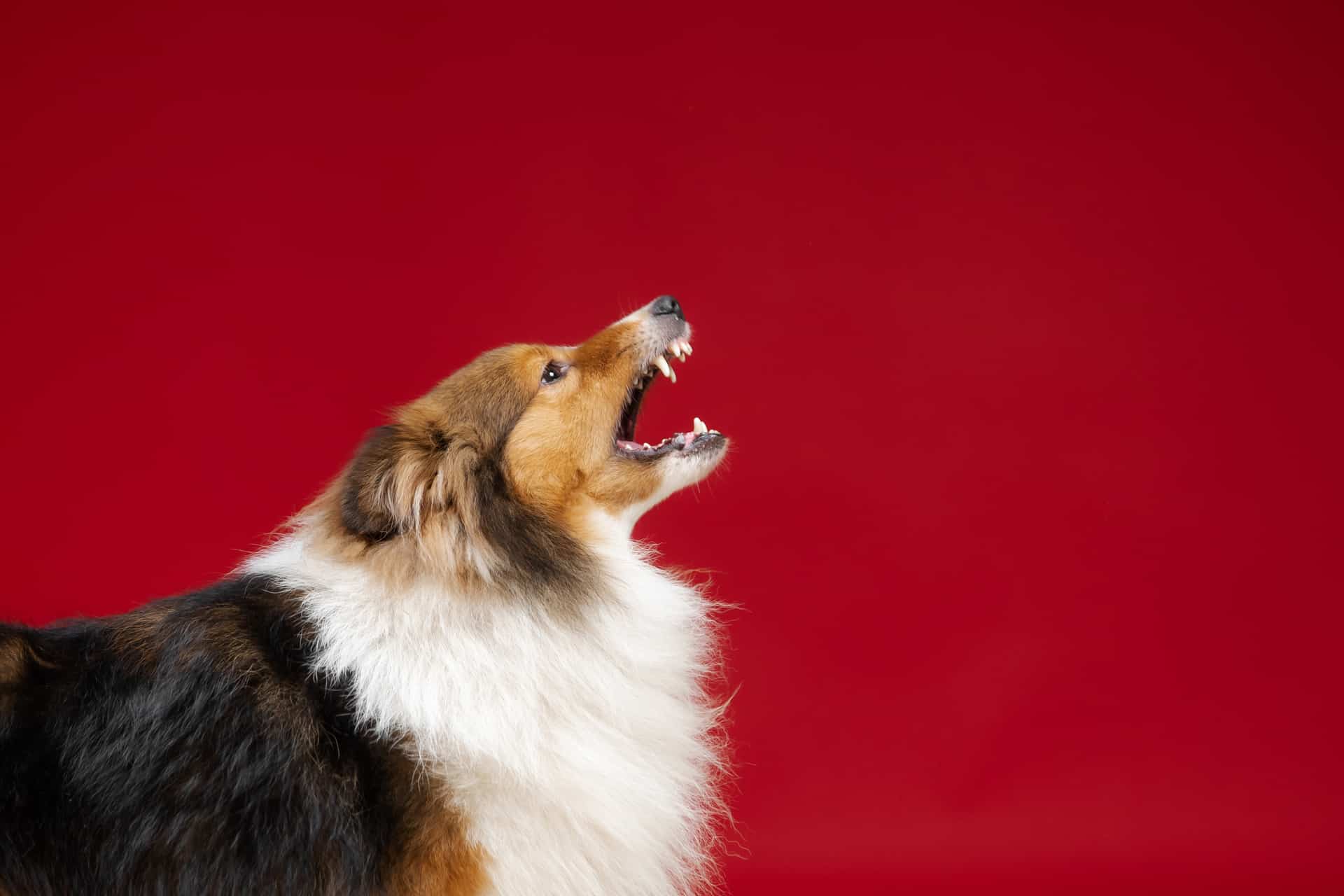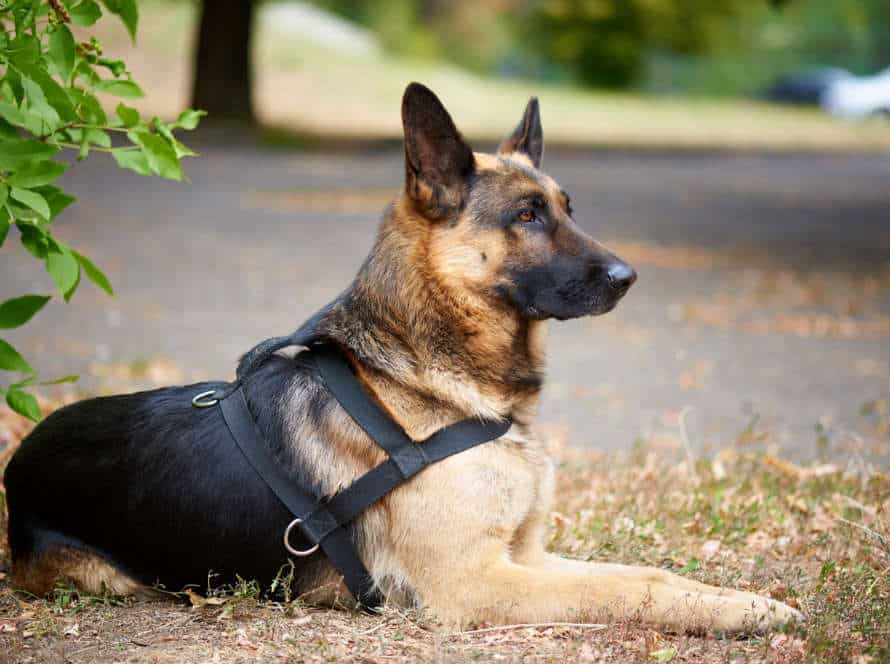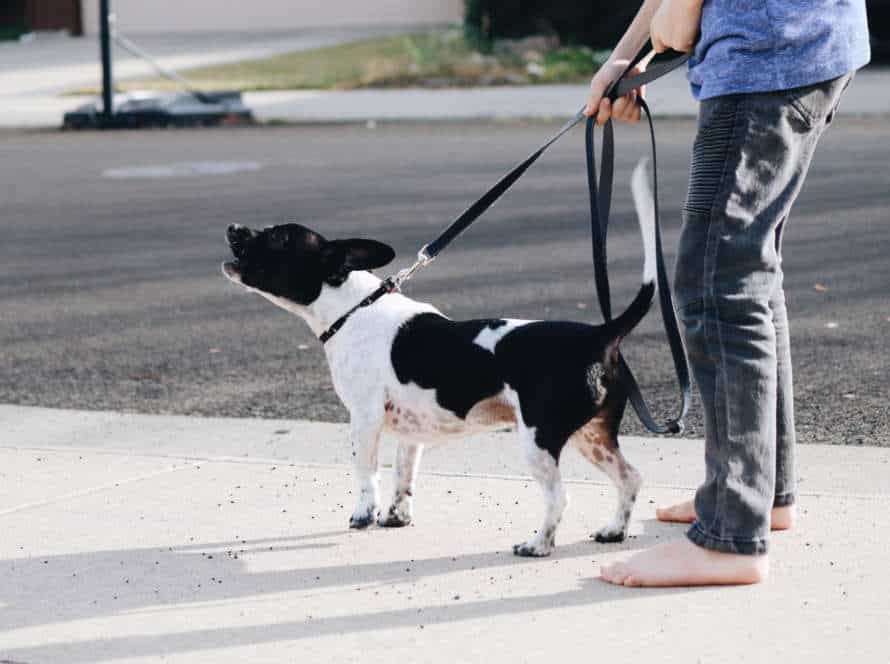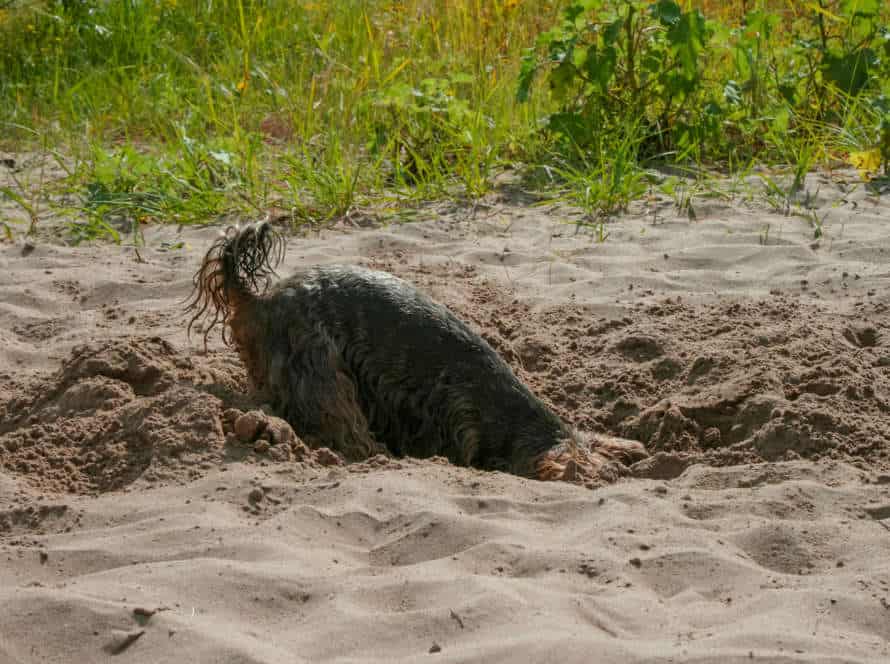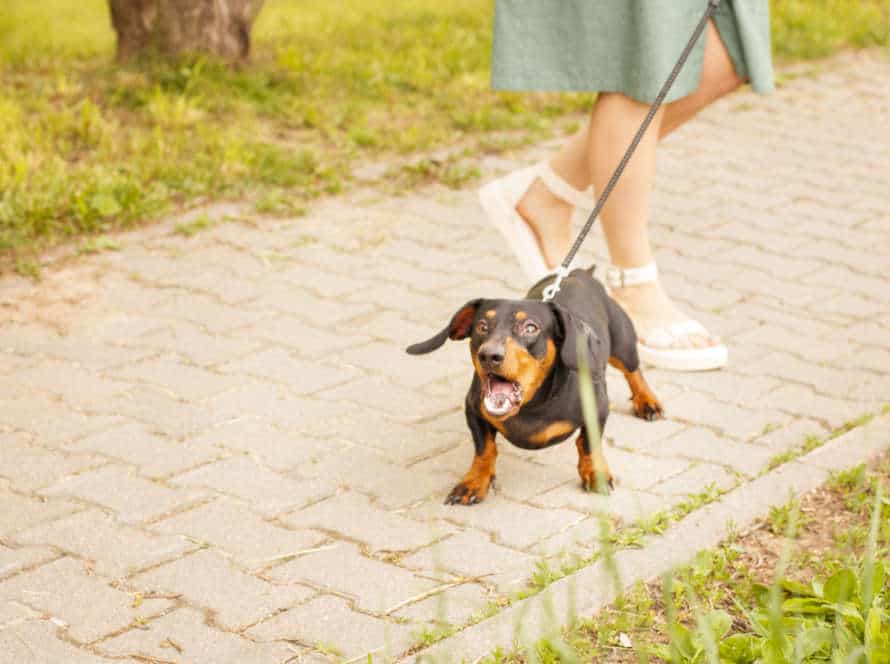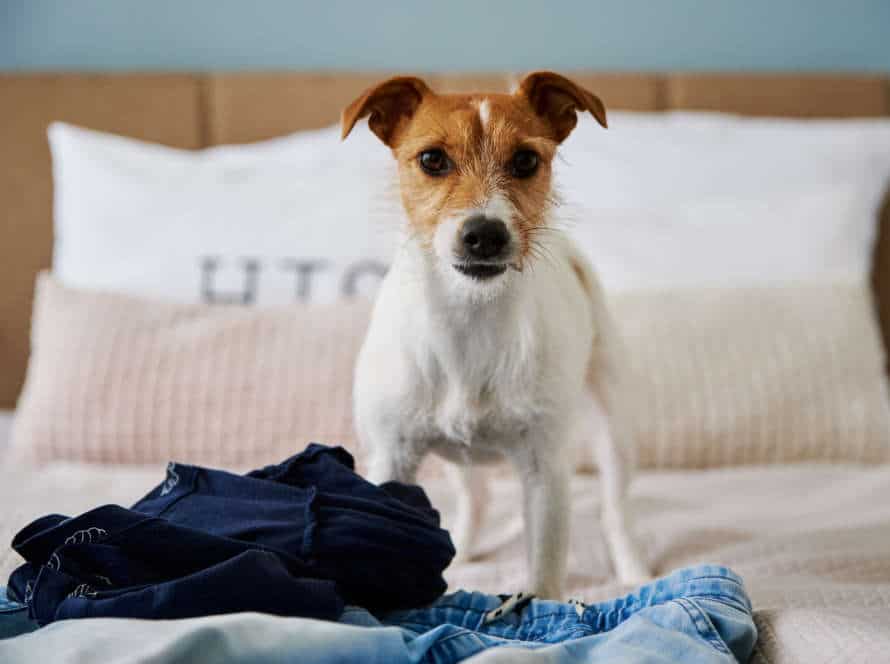What Triggers Aggressive Behavior in Dogs?
Aggressive behavior in dogs can have many triggers. Fear, anxiety, protection of territory, and social aggression are all common causes.
Mistreatment or bad experiences can lead to fear-related aggression. Dogs feel territorial and may lash out if they sense a threat. Unsocialized dogs may act aggressively toward other dogs.
Medical issues or injuries can also cause aggression. Identifying the cause is key to finding a solution. Professional help may be needed.
A reminder: Never punish an aggressive dog. It could make things worse and lead to injury.
Genetics and Breed Predisposition
Genetics and breed predisposition are both factors that can influence a dog’s aggressive behavior. Every breed has its own characteristics, but some are more prone to aggression than others. Let’s explore the roles genetics and breed predisposition play in a dog’s aggressiveness.
Identifying breeds with aggressive tendencies
Identifying dog breeds with aggressive tendencies is essential, as it helps us comprehend their genetic aggression and what triggers it. Here are a few breeds known for this:
- Pit Bull Terrier: Loyal and strong, but can be prone to sudden aggression to strangers and animals.
- Rottweiler: Protective of owners, but can show territorial aggression to strangers and other dogs.
- Doberman Pinscher: Protective and loyal, but can have aggression towards strangers if not socialized right.
- German Shepherd: Smart and loyal, but can be aggressive if not trained and socialized correctly.
Remember, aggression is not only dependent on breed. Early socialization, training, and environmental factors are all key in shaping a dog’s behavior regardless of breed.
Understanding genetics of dog aggression
Canine aggression is a complex trait. It is affected by a range of genetic and environmental factors. Certain breeds of dogs are more likely to show aggressive behavior than others, due to their genetics and breed.
Aggression in dogs can be caused by fear, anxiety, territorialism, resource guarding, or dominance. Not all dogs of the same breed display aggressive behavior, which shows that genetics alone cannot explain aggressive behavior in dogs.
It is important to understand the genetic and environmental factors that lead to canine aggression. This helps us to promote responsible dog breeding and ownership, prevent dog bites and aggression-related incidents, and ensure the development of social, healthy, and well-adjusted dogs.
Managing human expectations of breed behavior
It’s important to understand genetics and breed predisposition when dealing with aggressive behavior in dogs. Certain breeds have a greater chance of being aggressive, however, this doesn’t mean they always will be. The owner’s behavior and training have a big influence on a dog’s behavior.
Aggression is a complex behavior that could have a range of triggers. Learning these triggers can help to stop and manage aggressive behavior. Here are some tips to better understand breed behavior:
- Learn the breed’s normal behavior and temperament
- Look at the individual dog’s past and behavior
- Get help from a professional dog trainer or vet for training and modifying behavior.
By understanding and controlling expectations, while taking a proactive approach to canine behavior, we can keep humans and dogs safe and happy.
Environmental Factors
Aggression in pups can be caused by multiple environmental elements. These include transformations in the setting, strange people or animals, and even particular physical problems. It’s essential to recognize that dogs may react differently to diverse stimuli, and some may be more prone to aggression than others. In this section, we’ll cover some of the environmental factors that may trigger aggressive behavior in canine companions.
Effects of early socialization and training
Puppy socialization and training early on have a major effect on their behaviour as adults. Puppies that are properly socialized and trained are less likely to be aggressive when they grow up. However, puppies that don’t get any early socialization or training are more prone to aggression.
This can be caused by specific environmental factors, such as:
- Fear and anxiety – dogs may become aggressive if they’re scared or uneasy.
- Territorial behaviour – dogs protect their territory, and may become aggressive if it’s threatened.
- Protective behaviour – dogs may be aggressive to defend their owners or pack.
- Resource guarding – dogs may be aggressive to protect their food or toys.
It is key that puppies get early socialization and training to reduce the chances of aggression. This helps the pup adapt to new situations, places and people, making them more self-assured and less stressed.
The importance of a stable and predictable environment
A stable and predictable environment is a must for your pup’s behaviour, especially if they are aggressive. Different environmental factors can bring out aggression in dogs. Changes in their physical or social environment can greatly affect their behaviour.
Here are some environmental factors that can cause aggression in dogs:
- Inconsistency in their daily routine, like when they eat or exercise.
- Loud or sudden noises, like fireworks or thunderstorms.
- Changes in the home, like getting a new baby or pet.
- Lack of socializing or exposure to new people and animals.
When dogs have a steady environment, they are less likely to get anxious or stressed, which can cause aggressive behaviour. By giving them a familiar routine and reducing disruptive changes, you can help them feel secure and content.
The impact of abuse, neglect, or trauma
Exposure to mistreatment, neglect, or trauma can affect a pup’s conduct greatly. This can manifest in aggression and other behavioral issues. Such environment factors can have a lasting effect on a dog’s mental and emotional state, resulting in scared, anxious, and at times aggressive behaviour.
Dogs who endure abuse or neglect may become distrustful and fearful of humans. They may react aggressively when they feel threatened. Events like car crashes or being attacked by other animals can also prompt aggressive behaviour in dogs.
Early intervention, socialization and positive reinforcement training can help reduce the impact these environment factors have on a pup’s conduct. It is essential to give a safe and loving atmosphere for dogs to develop properly and keep their emotional well-being.
Pro tip: If you think your dog has endured abuse or neglect, consult a professional pet behaviourist to decide the best course of action.
Medical Causes
Aggressiveness in dogs might be due to medical reasons. It’s difficult to know the exact cause of such behavior, however certain medical issues can contribute to it or make it worse. These include brain tumors, endocrine disorders, metabolic issues, and vision/hearing problems.
Let’s explore some of these further.
Recognizing pain or illness as a trigger for aggression
Canine aggression can be caused by various things, such as pain or sickness. Pet owners can prevent and treat their pup’s aggressive behaviour by recognising and addressing the medical issue causing it.
Here are a few symptoms that could indicate your dog is in distress or discomfort:
- Shifts in appetite or weight loss
- Low energy levels or sluggishness
- Excessive vocalisation or whimpering
- Agitation or restlessness
- Pain or unease when touched in certain areas
If you suspect your pup’s aggression is due to a medical problem, book an appointment with your vet. They can do a full physical exam, run diagnostic tests, and create a plan to help ease your dog’s pain and condition, which in turn can reduce their aggression.
Effects of medications on dog behavior
Certain medications can significantly affect a dog’s behavior. This may include changes in their mood, energy level, or aggression. Examples of medication side effects and their influence on behavior are:
- Steroids: Corticosteroids, typically prescribed for allergies, can cause a dog to become more agitated, restless, and aggressive.
- Painkillers: Opioids and other pain medicines can make a dog drowsy, disoriented, or restless, which can lead to aggression.
- Antidepressants: SSRIs used to treat anxiety and depression can cause lethargy, confusion, or even aggressive behavior.
Pro Tip: Always obey your vet’s dosage instructions. Also, watch out for any changes in your dog’s behavior while on the meds.
Understanding the impact of neurological or brain disorders
Brain or neurological disorders can greatly affect a person’s physical and mental health. This can lead to symptoms from mild to extreme. It can be hard to spot these and early diagnosis is key for successful treatment.
Examples of neurological disorders people can suffer from are: Alzheimer’s, Parkinson’s, epilepsy and MS. These can cause memory loss, muscle weakness, seizures and tremors.
Dogs too can experience neurological and brain disorders. These can lead to aggressive behaviour. Common triggers for this could be fear, defending their territory, medical issues such as pain or illness, and brain problems like tumours or encephalitis.
It’s important to recognize and identify the cause of the aggression in dogs so that it can be treated and behaviour modified appropriately. This will ensure safety for both the dog and those around it.
Territoriality and Protectiveness
Many assume aggressive behaviour in dogs is from no training or discipline. However, it can also come from a dog’s instinct to guard its territory. Or, it may be to protect someone or something it deems important. Let’s explore more about how territoriality and protectiveness influence a dog’s behaviour.
Identifying triggers related to territory
Dogs commonly exhibit territoriality and protectiveness. To avoid aggression, it’s key to recognize their triggers. Here are some common ones:
- Other animals or dogs in their space.
- Strangers or unfamiliar people near their family.
- Fear of intrusion, attack, or theft.
- Loud, sharp, or sudden noises.
- Any perceived risk to their owner or household.
Identifying triggers and taking the right steps to address them can help reduce aggressive behavior. Training, socialization, and desensitization can all be useful in lowering their territorial attitude.
Understanding the dog’s sense of ownership over resources
Dogs possess a sense of ownership over things. This is due to a mix of two instincts: protectiveness and territoriality. Territoriality is a dog’s natural inclination to guard its area, while protectiveness is when it guards and defends its family and resources.
There are several causes for aggressive behaviour in dogs. These include:
- Resource guarding: If a dog becomes possessive of their food, toys, or valuables, they may become aggressive when someone tries to take them away.
- Fear: If a dog feels scared, it may show aggression in order to defend itself.
- Lack of socialization: If a dog hasn’t been socialized properly, it may view strangers or animals as a threat, and act aggressively.
It is important for pet owners to understand the dog’s feelings of ownership and what triggers their aggressive behaviour. Professional help and positive reinforcement training can help prevent and manage aggressive behaviour in dogs.
Strategies to manage and minimize territorial behavior
Territorial behavior in dogs can lead to aggression towards humans and other animals. As a pet owner, it’s important to manage and reduce this kind of behavior. Here are some tips:
- Socialize your pup from an early age.
- Train them and give rewards for good behavior.
- Offer them exercise and mental stimulation.
- Monitor their interactions and intervene, if needed.
By applying these strategies, you can minimize aggressive behavior and create a harmonious home environment.
Fear and Anxiousness
Fear and anxiety are two main reasons for aggressive behavior in dogs. Dogs who feel scared or insecure may act aggressively. They can growl, lunge and even bite people or other animals. It’s hard to know when a fearful pup will be overwhelmed and when they may get aggressive. Let’s explore the signs of fear and anxiety, and how to better manage them.
Understanding the role of fear in aggressive behavior
Fear and anxiousness are major triggers of aggressive behavior in dogs. Understanding this is key to preventing harmful interactions and ensuring your pup’s well-being.
What can cause fear and anxiousness?
- Socialization: If not done correctly, can cause fear of new people and other dogs.
- Previous experiences: Traumatic situations such as abuse or aggression from other dogs can lead to fear-based aggression.
- Medical issues: Pain, discomfort, or a medical condition can make them fearful and hostile.
- Breed disposition: Some breeds are more territorial and aggressive than others.
It’s important to learn the signs of fear in dogs – trembling, avoiding eye contact and cowering – to recognize when they’re feeling uncomfortable. Positive reinforcement, praise and a safe environment can help reduce fears and aggressive behavior.
Identifying triggers for anxiety-related aggression
Many dog owners experience anxiety-related aggression. Knowing triggers is key to managing and avoiding bad behavior. Here are some possible triggers:
- Loud Noises – Fireworks, thunderstorms, sirens and other loud sounds can provoke fear in dogs, leading to aggression.
- Strangers – Dogs who have not been socialised or had negative experiences with strangers can become aggressive when meeting new people.
- Other Animals – Dogs who haven’t been socialised with other animals, may act aggressive when encountering them.
- Pain – Dogs in pain can become aggressive if they are touched or approached a certain way.
- Separation – Separation anxiety can cause dogs to be anxious and aggressive when left alone.
Recognizing these triggers can help owners stop anxiety-related aggression. A professional trainer or behaviorist can help resolve the situation.
Implementing counter-conditioning and desensitization techniques
Aggressive behavior in dogs can be caused by fear and anxiousness. Counter-conditioning and desensitization techniques can help.
Counter-conditioning involves changing a dog’s emotional response to a stimulus. Replacing fear and anxiety with a positive association, for example, if a dog is scared of strangers, gradually introducing them in a positive environment.
Desensitization involves gradually exposing a dog to the stimulus in a controlled environment. Increasing intensity or duration of the exposure to help them become accustomed.
Patience, consistency and expertise are required. Seek professional dog trainer or behaviorist to properly implement these techniques. Pro Tip: Reward-based training can reduce fearful and aggressive behavior. Consistent rewards with treats or positive reinforcement helps reinforce positive associations and reduce negative ones.
Human-related Triggers
Humans are, by far, the biggest cause of aggression in dogs. Triggers such as fear, feeling territorial, or being provoked can be the source. Knowing how to avoid these triggers can help owners. Here’s a look at some common human-related ones.
Recognizing the impact of owner behavior on a dog’s aggression
It is essential to understand that dogs’ aggression can be caused by multiple factors, such as the owner’s behaviour. Here are some human-related triggers of aggressive behaviour in dogs:
- Lack of socialization: If owners keep their dog isolated, it can lead to aggression when they meet new people or animals.
- Punitive training tech: Physical punishment, like hitting or screaming at a pooch, can create fearfulness and aggression towards their owner.
- Neglect or abuse: Dogs who have been abused or neglected by their owner may become hostile when they sense dangers. This hostility can also be aimed at other pets or people.
- Inconsistent rules and boundaries: Dogs need routine and regularity. Inconsistent rules or unclear boundaries from an owner may cause confusion and nervousness in dogs which can bring about aggressive behaviour.
Recognizing these triggers and dealing with them through suitable socialization, positive training techniques and clear and consistent regulations can help to avert aggressive behaviour in dogs.
Understanding the role of training and structure in aggression management
Training and order are musts for managing and avoiding aggressive doggy behavior. We must address human-related triggers that cause it. Common triggers?
- Fear and nervousness – Dogs may go aggressive when feeling threatened or uneasy.
- Territorial habits – Some dogs may be protective of homes, food, toys, etc., and attack strangers or other animals.
- Poor socialization – Dogs not exposed to new people, animals, or settings may be aggressive or scared.
- No communication – Owners not understanding their dog’s signs might trigger aggression.
We can train and structure the dog to control reactions to these triggers and avoid aggression. Socializing from young, teaching commands, giving exercise and mental stimulation – all help. A pro dog trainer can be helpful too.
Tip: Ask a pro if your dog is aggressive to stay clear of trouble.
Ensuring proper supervision and control in human-dog interactions
Supervising and controlling human-dog interactions is essential, as certain triggers can lead to aggression in dogs. Here are some human-related triggers to be aware of:
- Touch: Unexpected or uncomfortable touching might bring out the dog’s aggressive side.
- Eye contact: Direct eye contact can be seen as a threat and cause aggression.
- Crowding: Being crowded or cornered can cause anxiety and result in aggression.
- Noise: Noises that are loud or sudden can scare a dog and lead to an aggressive response.
To prevent these triggers, it’s important to teach dogs to trust humans with positive reinforcement. Maintain a safe distance from unfamiliar dogs, and always supervise interactions between dogs and kids. If you notice a concerning pattern of behavior, seek help from a dog behaviorist.
Frequently Asked Questions
Q: What are the common triggers for aggressive behavior in dogs?
A: Common triggers for aggressive behavior in dogs include fear, territorialism, frustration, pain, and lack of socialization.
Q: How do I prevent my dog from becoming aggressive?
A: Prevention methods for aggression in dogs include proper socialization from an early age, positive reinforcement training, providing enough exercise and playtime, and seeking professional help if necessary.
Q: Can aggressive behavior in dogs be treated?
A: Yes, aggressive behavior in dogs can be treated through behavior modification techniques, medication, and training. It is important to seek professional help when dealing with aggression in dogs.
Q: How can I tell if my dog is showing signs of aggression?
A: Signs of aggression in dogs include growling, snarling, biting, lunging, raised fur on the back, dilated pupils, and stiffness in the body.
Q: Can aggression in dogs be breed-specific?
A: While certain breeds may have a predisposition to certain behaviors, aggression in dogs is not solely breed-specific. Individual dogs can exhibit aggressive behavior regardless of breed.
Q: How can I safely manage an aggressive dog?
A: Safely managing an aggressive dog involves providing barriers to prevent their access to other dogs or people, using a sturdy leash and harness, and providing adequate training and professional help as needed.

